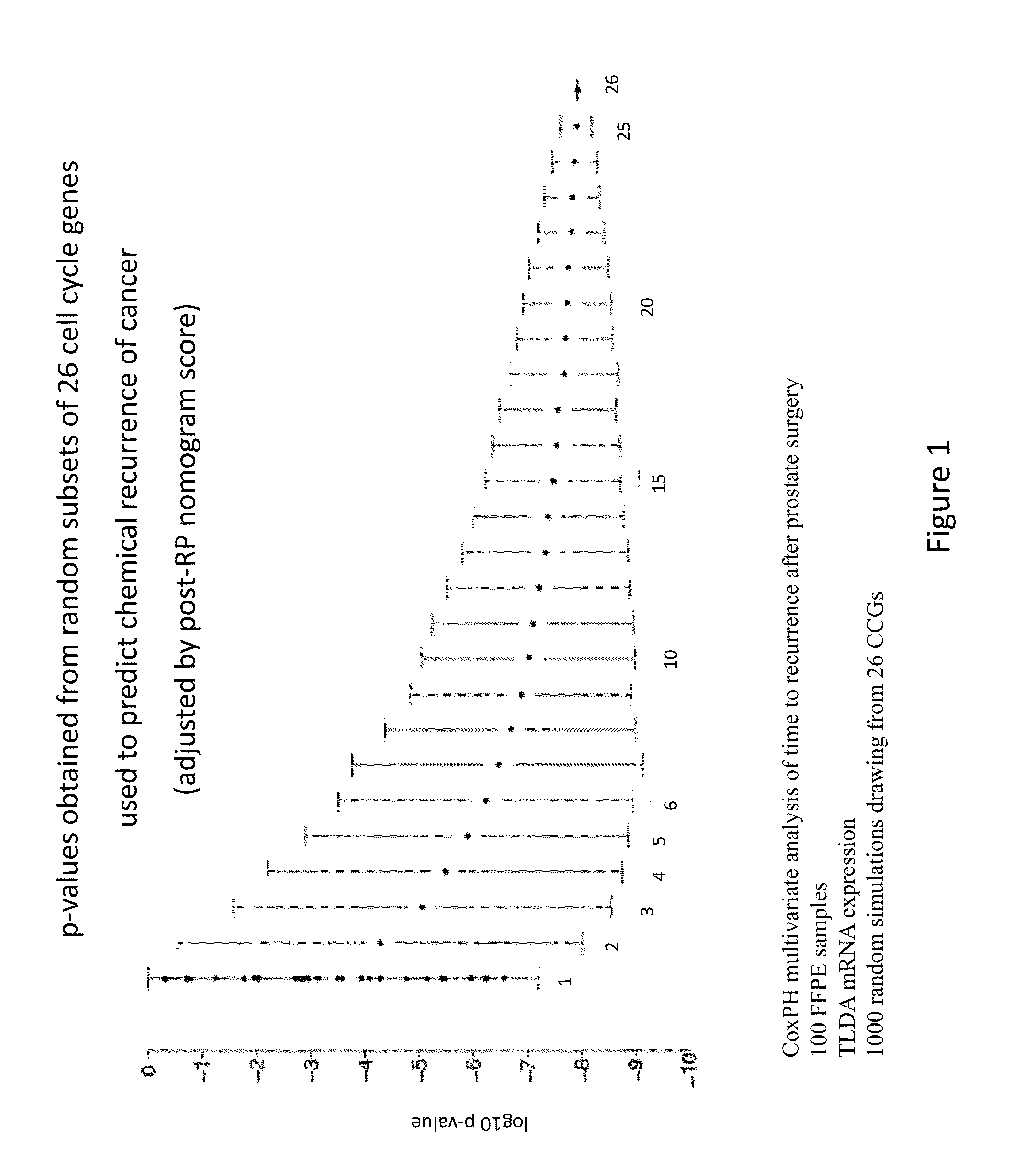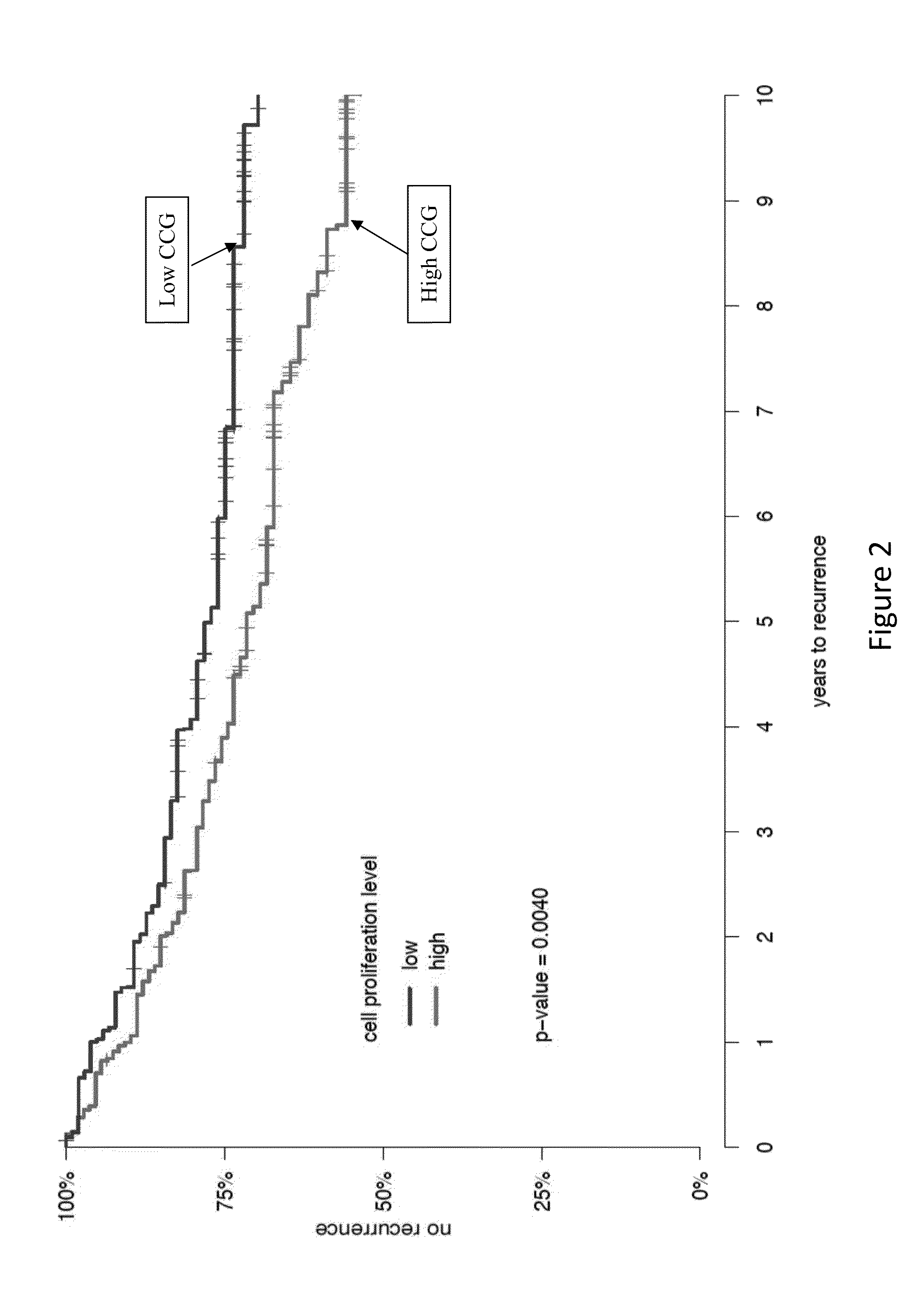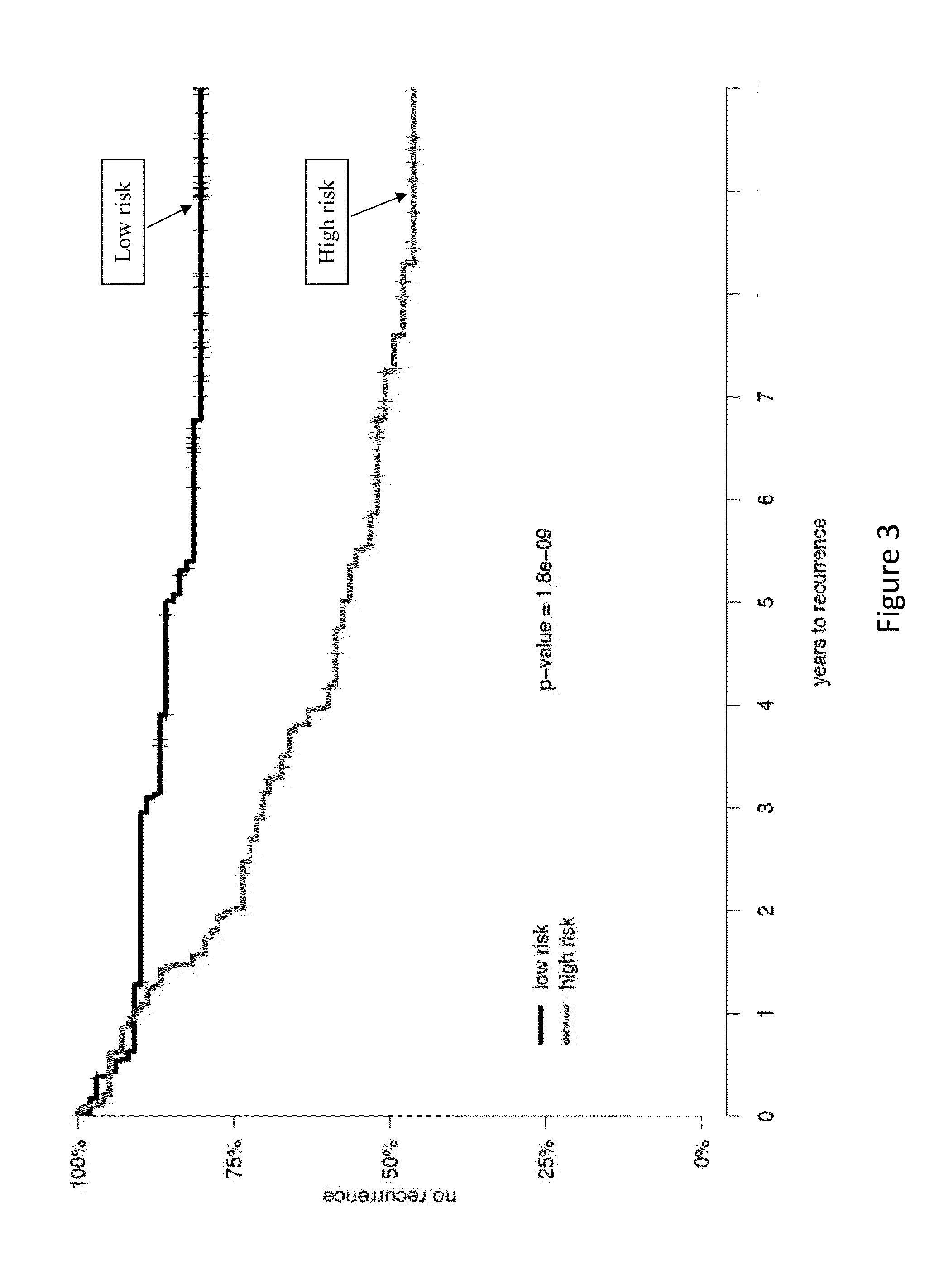Gene signatures for cancer prognosis
a gene signature and cancer prognosis technology, applied in the field of molecular classification of diseases, can solve the problems of significant morbidity, treatment and side effects that are unnecessary, and the severity of side effects of treatment and their associated side effects and costs is often different, so as to determine the prognosis
- Summary
- Abstract
- Description
- Claims
- Application Information
AI Technical Summary
Benefits of technology
Problems solved by technology
Method used
Image
Examples
specific embodiments
[0209]Two specific embodiments of the disclosure for use in biopsy and prostatectomy samples are show below. Those skilled in the art will understand that each element of these processes may be altered while retaining the essential features and accomplishing the same goals.
Indications and Use
[0210]Formalin-fixed paraffin-embedded (FFPE) tissue from blocks or slides of prostatic adenocarcinoma biopsies may be used. Blocks may include at least 2 mm of tumor on diagnostic H&E slides for sample processing and RNA extraction. In cases where blocks are not available, one 3-5 μm H&E slide followed by ten consecutive 10 μm unstained slides and a final H&E slide may be acceptable. Sample barcodes, which are scanned and tracked, may be applied to each block (or slide). The H&E slides from each case may be evaluated, e.g., by a pathologist, to determine the location and amount of tumor per slide. Using the H&E stained slides as a guide, tumor tissue may be removed from ten unstained slid...
embodiment 1
[0234]A method for determining a test patient's likelihood of cancer recurrence or cancer-specific death, comprising:[0235](1) measuring, in a sample obtained from said test patient, the expression levels of a panel of genes comprising at least 3 test genes selected from Panel F;[0236](2) providing a test expression score by (a) weighting the determined expression of each gene in said panel of genes with a predefined coefficient (which may be 0), and (b) combining the weighted expression of each gene in said panel of genes to provide said test expression score, wherein said test genes are weighted to contribute at least 25% to said test expression score; and[0237](3) diagnosing said test patient as having either (a) an increased likelihood of cancer recurrence or cancer-specific death based at least in part on said test expression score exceeding a first reference expression score or (b) no increased likelihood of cancer recurrence or cancer-specific death based at least in part on ...
embodiment 2
[0238]The method of Embodiment 1, wherein said test genes are weighted to contribute at least 30%, 40%, 50%, 60%, 70%, 80%, 90%, 95%, 96%, 97%, 98%, 99%, or 100% of the total weight given to the expression of all of said panel of genes in said test expression score.
PUM
| Property | Measurement | Unit |
|---|---|---|
| total weight | aaaaa | aaaaa |
| concentration | aaaaa | aaaaa |
| PSA | aaaaa | aaaaa |
Abstract
Description
Claims
Application Information
 Login to View More
Login to View More - R&D
- Intellectual Property
- Life Sciences
- Materials
- Tech Scout
- Unparalleled Data Quality
- Higher Quality Content
- 60% Fewer Hallucinations
Browse by: Latest US Patents, China's latest patents, Technical Efficacy Thesaurus, Application Domain, Technology Topic, Popular Technical Reports.
© 2025 PatSnap. All rights reserved.Legal|Privacy policy|Modern Slavery Act Transparency Statement|Sitemap|About US| Contact US: help@patsnap.com



